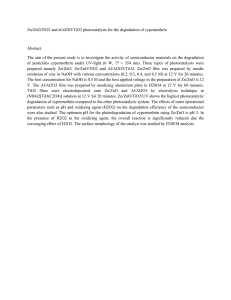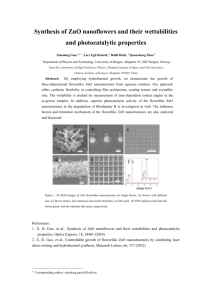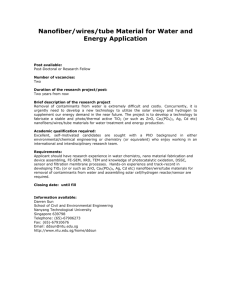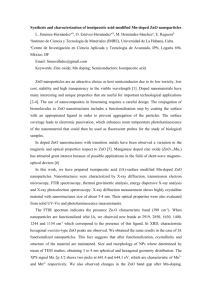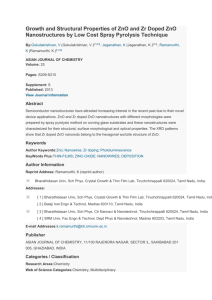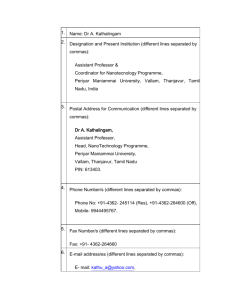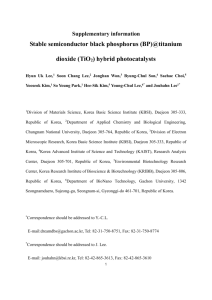Challenges of Hybrid Nanostructured Metal Oxide Photocatalysts
advertisement
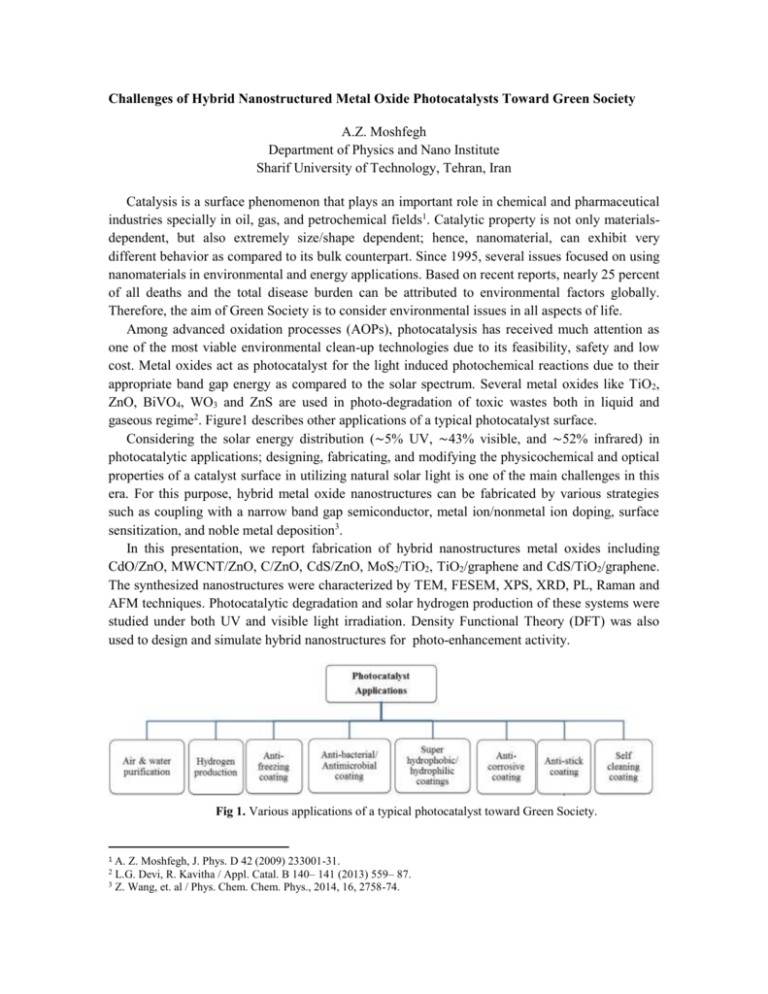
Challenges of Hybrid Nanostructured Metal Oxide Photocatalysts Toward Green Society A.Z. Moshfegh Department of Physics and Nano Institute Sharif University of Technology, Tehran, Iran Catalysis is a surface phenomenon that plays an important role in chemical and pharmaceutical industries specially in oil, gas, and petrochemical fields1. Catalytic property is not only materialsdependent, but also extremely size/shape dependent; hence, nanomaterial, can exhibit very different behavior as compared to its bulk counterpart. Since 1995, several issues focused on using nanomaterials in environmental and energy applications. Based on recent reports, nearly 25 percent of all deaths and the total disease burden can be attributed to environmental factors globally. Therefore, the aim of Green Society is to consider environmental issues in all aspects of life. Among advanced oxidation processes (AOPs), photocatalysis has received much attention as one of the most viable environmental clean-up technologies due to its feasibility, safety and low cost. Metal oxides act as photocatalyst for the light induced photochemical reactions due to their appropriate band gap energy as compared to the solar spectrum. Several metal oxides like TiO2, ZnO, BiVO4, WO3 and ZnS are used in photo-degradation of toxic wastes both in liquid and gaseous regime2. Figure1 describes other applications of a typical photocatalyst surface. Considering the solar energy distribution (∼5% UV, ∼43% visible, and ∼52% infrared) in photocatalytic applications; designing, fabricating, and modifying the physicochemical and optical properties of a catalyst surface in utilizing natural solar light is one of the main challenges in this era. For this purpose, hybrid metal oxide nanostructures can be fabricated by various strategies such as coupling with a narrow band gap semiconductor, metal ion/nonmetal ion doping, surface sensitization, and noble metal deposition3. In this presentation, we report fabrication of hybrid nanostructures metal oxides including CdO/ZnO, MWCNT/ZnO, C/ZnO, CdS/ZnO, MoS2/TiO2, TiO2/graphene and CdS/TiO2/graphene. The synthesized nanostructures were characterized by TEM, FESEM, XPS, XRD, PL, Raman and AFM techniques. Photocatalytic degradation and solar hydrogen production of these systems were studied under both UV and visible light irradiation. Density Functional Theory (DFT) was also used to design and simulate hybrid nanostructures for photo-enhancement activity. Fig 1. Various applications of a typical photocatalyst toward Green Society. 1 A. Z. Moshfegh, J. Phys. D 42 (2009) 233001-31. L.G. Devi, R. Kavitha / Appl. Catal. B 140– 141 (2013) 559– 87. 3 Z. Wang, et. al / Phys. Chem. Chem. Phys., 2014, 16, 2758-74. 2

